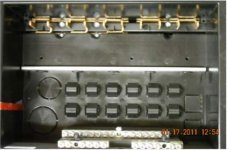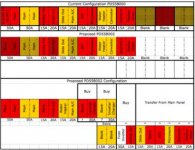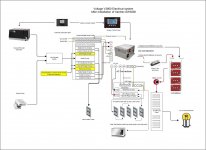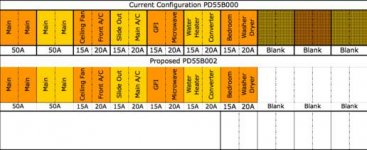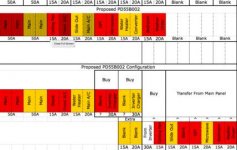HarleyRider
Member
Hi. This is my first post to a forum, but I've learned a lot reading through many of the forums. I am trying to determine which circuits to power through an inverter. I plan to move the circuits to a subpanel. I know for sure that I will power the GFCI, bedroom, and living room outlets and the microwave with the inverter. I am trying to find out the current requirements for the ceiling fan and Greystone fireplace to decide whether to power these through the inverter. Thanks in advance for your help.

